R. M. Mangalika Rajapaksha
Research Officer, Central Cultural Fund, Anuradhapura.
Translated by Chryshane Mendis
Introduction
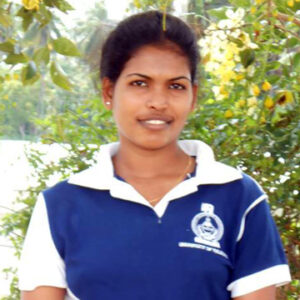

Civilization in 3rd century BC Sri Lanka was a highly cultured one (Pagnasara Thero 2005:10) with a tradition of continuous written records. Writing is an important feature in the evolutionary process of human communication (Bandara 2008:1) but the origin of writing is not as old as that of the origin of man. In the early 19th century James Princep was able to decipher a hitherto unknown script in India (Paranavitana 1970:i) which is called the Brahmi script. This was compared with the rock inscriptions of Sri Lanka by Turner and found to contain similarities in the language (Jayawardane 1). This new found interest caught the attention of many scholars which resulted in the recording and documenting of numerous rock inscriptions found throughout the island.
The majority of the rock inscriptions dating to the 4th and 5th century AD contain the word “Vaharala (වහරල)â€. This specific word is found in many different variations such as Viharala (විහරල), Veherila (වෙහෙරිල), Viharila (විහà·à¶»à·’ල), Vaharalaya (වහරලය), Viharalaya (විහà·à¶»à¶½à¶º), and Veheralaya (වෙහෙරලය)  (Priyanka 2008:1) and also it is found after the word “Chidavi (චිදවී)â€. Although there are no specific types of inscriptions with this word, inscriptions with these words are collectively known as Vaharala inscriptions (වහරල ලිපි). Scholars have put forward various theories as to the meaning of this word but there seems to be no common theory amoung them. As the various theories on the meaning of this word have not paid much attention to the locations of the inscriptions and their nature, the main aim of this study is to investigate the Vaharala inscriptions that have been overlooked by others and to determine their epigraphical nature and their socio-archaeological data there by giving an outlook into the society at that time.
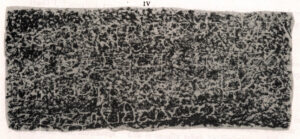
Vaharala inscriptions were first studied in 1906 (Uduwara 1991:121). Senarat Paranavitana has presented a more logical idea on the Vaharala inscriptions (Paranavitana 1955:35-65); where his idea that it means release from slavery or servant hood has been incorporated to the society. But based on linguistic, historical and cultural facts this statement is proved wrong according to the scholars Madauyangoda Vimalakthi Thera (Vimalakthi Thera 2004:107-108), Kotaneluwe Chandajothi Thera (Chandajothi Thera 1962:24), Saddhamangala Karunarathne (Karunarathne 1984:117-118), Bandusena Gunersekara (1989 November 12:18), Sirimal Ranawella (Ranawella 2008:32-35), Malani Dias (Dias 1991), and Karunasena Hettiarachchi (Hettiarachchi 2005:137).
Being proficient in a given field is a great achievement. This proficiency is created by the deep sense of understanding and knowledge one has to that field. Accordingly given below are the ideas on the meaning of this word by scholars.
- Sinhala Dictionary – slavery, servant, submission, performing all work (Sannasgala 1991:258)
- Rock inscriptions Alphabet – Vahara/Vaharaya (වහර/වහරය) = Vehera/Viharaya (වෙහෙර/විහà·à¶»à¶º)
Vaharala/Vahara layara/Vahera la (වහර ල/වහර ලයර/වහෙර ල)  = Vihara Salaka (විහà·à¶» සලà·à¶š )
Vahara laha (වහර ලහ)  = Vihara Salaka (විහà·à¶» සලà·à¶š) (Ranawalla 2004:123)
- Senerat Paranavitane – the idea of Slavery or Vahal (වහල්) (Paranavitane 1955:35,36)
- J. Wijeratne – wood or timber sacrifice (Paranavitane 1955:36)
- Sirimal Ranawalla – making of Vihara Salaka
- Malani Dias – being exempted from compulsory services (Dias 1989:19)
- Wimalakthi Thera – a Vihara chamber/making a Vihara chamber (Wimalakthi Thera 2004:108)
- Saddhamangala Karunarathne – making of buildings for Viharas (Karunarathne 1984:117-118)
- Kotaneluwe Chandajothi Thera/ Bandusena Gunersekara – making the Viharageya/ making chambers in the Viharaya (Chandajothi Thera 1962:24, Gunersekara 1989 November 12:18)
- Karunasena Hettiarachchi – being exempted from compulsory services (Hettiarachchi 2005:137)
- Benil Priyanka – making chambers in the Viharaya/ Vihara chamber/making of a (Priyanka 2012:14)
Calligraphic details from Vaharala Inscriptions
The development of the Sinhalese language and alphabet goes hand in hand (Gunersekara 1996:40). The Brahmi script it is believed to have evolved over the centuries into the present Sinhalese script. The transitional period of the Brahmi script can be stated between the 6th – 7th centuries AD (Lankage 1996:49). Most of the Vaharala inscriptions belong to this period with a few belonging to the 5th century AD. In the development of the Sinhalese script, the middle period or the transitional period could be stated as the period between the 6th to 7th centuries AD where an acceleration of the transformation of the script could be observed (Gunersekara 1996:82). Although it is hard to confirm as to when the Brahmi script began transformation into the present Sinhalese script, a transformation is clearly observable during the 6th century AD (ibid 83).
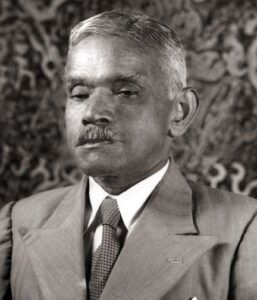

When comparing the inscriptions of the 6th – 7th centuries, variations in the scripts could be seen, (ibid 84) especially when comparing the Vaharala inscriptions to other contemporary inscriptions. These details would not be discussed individually but as a whole.
The letters of the Nilagama inscription which belongs to the middle of the 6th century AD are circular in shape (Paranavitana 1943:28) whereas the letters of the Nagirikanda inscription are vine-like (a free style without any angles)in shape (Paranavitana & Godakumbura 1963:11). The Kudarathmale inscription contains totally different shapes when compared to the above two (Paranavitana & Godakumbura 1963:37). The letter ‘අ’ in the Nilagama inscription is found in 3 different forms (Paranavitana 1943:37). The letters ‘ආල , ඇල & ඈ’ could not be identified in the studied inscriptions but the letter ‘ඉ’ although least used can be found in 8 places in the Nilagama inscription. The ‘උ’ of the Madagama Viharaya inscription contains an opening from the right with a line drawn from the top of an angle to left (Paranavitane 1943:142-143), this is found to be more circular in the Baros Mandapa Vaharala inscriptions (ibid:137-144). The base line of the letter ‘එ’  in the Kudarathmale inscription curves inwards a bit in the center with the ends vining outwards (Paranavitane & Godakumbura 1963:37) and in the inscriptions of the Baros Mandapa, the right side line rises up with an incline to the left with the semi-circle turned to the right (Paranavitana 1943:137-144). Also the letter ‘ඔ’ could be identified in the Vessagiriya inscription (Paranavitana 1943:128-139).
The letter ‘ක’ found during this period differs from earlier periods by having a vertical line with its bottom end curved to the left and a horizontal line from the center with its two ends curving downwards (Gunersekara 1996:89). The ‘ක’ symbols in the inscriptions of Uttimaduwa (Karunarathne 1984:117) and Madagama Viharaya (Dias 1991:43) are beautifully designed (Gunesekara 1996:40) where the horizontal line having its ends curving downwards as before but having a small circle above the center of the horizontal line. From the Kudarathmale inscription the letter ‘ඛ’ is found in the shape of a hook (Paranavitane & Godakumbura 1963:37). Further circular shaped ‘ග’ letters could be found. The letter ‘ග’ which takes the form of a horseshoe in the Ridi Vihara inscriptions (Dias 1991:43) contain an inwards curve from the left (Gunesekara 1996:89).
A letter ‘ච’ not found before could be seen in the Ridi Vihara inscription (Gunewardane 1996:92) where two lines joining the horizontal line divide with the left line curving and another line across the right line (ibid). This could be seen in the Baros Mandapa and Vessagiriya inscriptions as well but the Kudarathmale inscription does not contain lines running across (ibid). The head of the letter ‘ඩ’ of the Madagama inscription is in the shape of a large hook. The letter ‘ණ’ could be seen in the Vessagiriya inscription but also a more beautified form could be found in the Kudarathmale inscription.
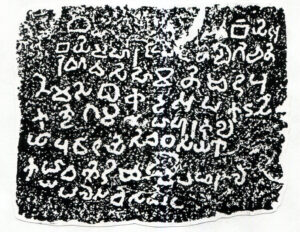

The letter ‘à¶â€™ could be found in two forms in the Kudarathmale inscription. The letter ‘ද’ of the Sangamu Vihara inscription contains a small horizontal line attached to one end of the larger semi-circle (Dias 1991:82). A number of variations of this letter could be found during this time. The letter ‘ද’ of the Neelagama and Kudarathmale inscriptions contain a smaller semi-circle curving towards the left at the bottom of the larger semicircle, it could be seen as forerunner to the present letter ‘ද’ (Pagnyasara Thera 2007:166). No noticeable difference could be seen in the letter ‘න’ with the older periods (Gunersekara 1996:99). The Kudarathmale inscription contains a somewhat developed ‘න’ but the ‘න’ of the Madagama inscription is closer to the modern letter.
Circular ‘ප’ letters with a small horizontal line joined to the left line of the figure could be found in Vaharala inscriptions as well as other contemporary inscriptions (Lankage 1996:56). Not much of a difference could be seen in the letter ‘බ’. The letter ‘ම’ could be found as angled shaped figures as well as free-shaped figures. The ‘ම’ of the Neelagama and Kudarathmale inscriptions contain a horizontal dash at the top.
The letter ‘ය’ of the Kudarathmale inscription could be found as a figure with two attached semi-circles with a vertical line running up from the center with a dash on it (Gunersekara 1996:103). Also the letter ‘ය’ with the shape of the contemporary ‘ප’ could be seen from the inscriptions of Baros Mandapaya. No difference could be seen in the letter ‘ර’ when compared to the same letter of earlier periods. The ‘ර’ of the Neelagama and Kudarathmale inscriptions is just a vertical line but a small circle could be seen on the top of this line in the Uttimaduwa inscription. The stages of the development of the ‘ල’ could be seen from the inscriptions at Baros Mandapaya, Kudarathmale and Ridi Viharaya (Pagnyasara Thera 2007:176 & Gunersekara 1996:105). The letter ‘ව’ is a special figure found only in the Uttimaduwa inscription and Kandakaadu inscription.
The letters ‘ෂ & à·â€™ are not found in any Vaharala inscription and a much more developed ‘ස’ could be found in the Ridi Viharaya Vaharala inscription when compared to other contemporary inscriptions (Gunersekara 1996:106). Very similar figures to the modern letter ‘හ’ could be found in the inscriptions of Ridi Viharaya, Vessagiriya and Madegama. In the bottom semi-circle of the letter ‘ළ’ in the Ridi Viharaya inscription a dot could be found at the end. In the Kudarathmale inscription the letters ‘ක්ඛ’ are found as one figure.
A large quantity of such letters could be found in these inscriptions and also instances where the sizes of the letters vary from one another within the same inscription. Further there are evidences of two or more inscriptions found on the same rock surface.
Language features
From the beginning to the 3rd centuryAD, most inscriptions contained Prakrit features but they seem to be lax later on (Amarawansha Thera 1969:27). Most features unique to the Sinhala language could be specially observed from the period of the Vaharala inscriptions thus making this period an important phase in the development of the history of the Sinhala language (Gunersekara 1996:106). During the Prakrit period the long vowels became shorter and also the isolation of consonants could be seen. This is believed to be a characteristic of only written form (Amarawansha Thera 1969:27) but it is also believed that these features were included in the spoken form during this period (Gunersekara 1996:106). Words deriving from original Sanskrit could be seen especially words synonymous with common or solitary meanings of Vaharala or other forms known as “Kahavana†(කහවණ). In the development of sounds the transformation from hard to soft sounds could be seen (Amarawansha Thera 1969:27).
Example:
පà·à¶ ීන > පජින
සංවච්ච්ර > හවජර
අහය > අපය
පධà·à¶±à¶à¶» >පà¶à¶±à¶œà¶½
The use of “ව†instead of “ප†could be seen –
කහà·à¶´à¶« > කහවණ
Paranavitana states that the meaning of the word Vaharala derives from the Sanskrit word “Vruhshala†(වෘෂල) (Paranavitana & Godakumbura 1963:35). According to him it derives as “වෘෂල < වරෂල < වරසල < වරල. D. J. Wijerathna believes that it is from the Sanskrit word ‘විසà·à¶»à¶½â€™ with a ‘ලී’ sound. ‘Vaharala (වහර ල)’ is the union of ‘Vahara (වහර)’ and ‘La (ල)’ to form a compound states Sirimal Ranawella and that ‘Vahara (වහර)’ is ‘Vihara (විහà·à¶»)’ and the ‘ල’ meaning ‘Lahe (ලහ)’ or ‘Salaka (සලà·à¶š)’ (Ranawala 2008:34). Bandusena Gunersekara’s views goes similar to that of Chandajothi Thera’s were the words ‘Ala (ආල)’ , ‘Alaya (ආලය)’ means  ‘Ghruha (ගෘහ)’,  ‘Mandira (මන්දිර)’ and also ‘Vihari (විහà·à¶»à·’)’ meaning occupation (à·€à·à·ƒà¶º කරන) and through that ‘විහà·à¶»à·’’ and ‘ආල’ becomes ‘Viharila (විහරිල)’ (Priyanka 2014:11). Malini Dias points out that the historical meaning for the word ‘Chidavi (චිදවී)’ is “චිද් ධà·à¶à·”වෙන් උපන්â€.
In the early Brahmi period instead of the verb, participles were used (Amarawansha Thera 1969:27). In the Vaharala inscriptions this changes and the verb takes more form (Paranavitane 1943:132-133). ‘Chidavi (චිදවී)’  is a causative verb . ‘Veyawaya (වෙයවය)’ goes as an Acclamation verb (ආà·à·’ර්වà·à¶¯ ක්â€à¶»à·’යà·à·€). In the first person tense in order to give the word “වෙමිâ€, they have added ‘මී’ to names of persons.
In the Vaharala inscriptions one could find many alternative words for one word such as the word ‘වහරල’ is found as Viharala (විහරල), Vaherila (වහෙරිල), Viharila  (විහà·à¶»à·’ල), Vaharalaya (වහරලය), Viharalaya (විහරලය) and the word Chidavi (චිද්වී) as Chadawala (චදවල), Vadewala (චදෙවල), and Sidavi (සිදවී). Therefore when investigating the language features of the Vaharala inscriptions as a whole it could be found that the language was changing with an uncertainty in the formation of words (Amarawansha Thera 1969:28).
Formal features
The cave inscriptions written from the 3rd century BC appears to have died out, as between the 1st to the 2nd centuries AD longer inscriptions with greater details are found. The formations of the Vaharala inscriptions when compared to other contemporary inscriptions differ in formations.
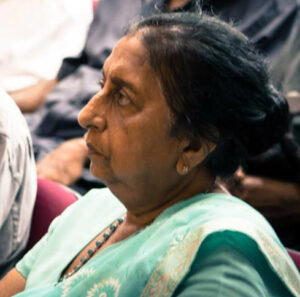

It has been observed that quite often Vaharala inscriptions are found in places where the foot touches the ground such as on a Sandakadapahana (Moonstone) or a flight of steps. In comparison with other rock inscriptions, a special feature of the Vaharala inscriptions is that the surface of the rock has not been specifically prepared for the inscription. The sentences either overlap each other or are quite close to each other and vary in size. At times these deviate from standard grammar and are mostly found in temple complexes. These are some of the special features identified when studying these inscriptions.
Therefore it is believed that these were inscribed for the needs of a specific group of people as most of these inscriptions are made of incomplete sentences. There is no evidence to show that these could have been the works of people still studying letters. Some inscriptions only contain a clause, thereby there could be times when someone could consider it a section of an inscription.
Socio-archaeological details found in Vaharala inscriptions
When studying these inscriptions, common features could be identified such as 1. the donor’s name, 2. donor’s village, 3. his positions or occupation, 4. the work, 5. the quantity of the donation, and 6. and rejoicing.
Names of People
Here two types of names could be seen, which are those of the names of Kings and royalty and those of the common people which includes regional and cast leaders and common people. There are many instances where in one Vaharala inscription, several names could be seen, for example on the No. 4 Vaharala inscription at Vessagiriya, three names;Â Sahasawarala, Dalameya, and Sakanakana Wesaminiya are found (Paranavitane 1943:128-139).
In most of these inscriptions the names of children, spouse, siblings and relatives are mentioned and it seems that these names were not common names used in rock inscriptions but those of use by the common people in the society because a name found in one inscription would not be found in another. Apart from the Vaharala inscriptions, names found in other contemporary inscriptions too are hard to identify. From whatever the identifiable names, it is hard to distinguish as to if they are male or female and their ancestry.
Names of places
In studying Vaharala inscriptions it is possible to identify place names, village names and names of Temples. For example in No. 1 Vaharala inscription at Vessagiriya the village name of Lathakathala and the temple Boya Upulwan Kassapagiri Viharaya could be identified (Paranavitane 1943:128-139).  In certain inscriptions names of forests too could be found (Dias 137-141). A Vaharala inscription in Paaluhungamuwa mentions Uththara Deshaya (උà¶à·Šà¶à¶» දේà·à¶º) (Dias 1991:87). At certain times both the name of the area and the temple could be found separately on the same inscription. The place names identified in these inscriptions are hard to trace in the present. There are times where a said name of a temple in a Vaharala inscription is found in other rock inscriptions of the same era, likewise it should also be studied in respect of place names by searching other inscriptions.
Occupations
When studying the context of Vaharala inscriptions it suggests that these were written by people not of high class. The majority of the occupations are from tile makers (උළු වඩුවන්) , identified by the words ‘ඔලුවඩු’, and ‘උලුවඩු’. Apart from them other occupations such as traders, carpenters, ministers and lords of the King, teachers could be found but most individuals do not mention their occupations, therefore they are thought to be local village people.
The Clergy
Most of the Vaharala inscriptions are found in temple premises and therefore frequently mentions the names of temples. Hence it is believed that the people of the inscriptions were people who rendered a service to the temples. When looking at temple names, the Kudarathmale inscription which states ‘පුවිජයි සිධට’ means ‘පà·à·€à·’දි සිධà·à¶»à·Šà¶®à¶ºâ€™ (Paranavitane 1955:30-34). Although the Kumbukkanda inscription mentions a Monk, the name of the Monk could not be identified (Dias 1991:186).
The society as seen from the Vaharala inscriptions
The idea for writing the Vaharala type of inscriptions is still unknown. It is believed that these would have been written by a certain group of people in the society for a specific need. Most of the Vaharala inscriptions found in Sri Lanka are centered on a temple hence the majority of them speak about a temple. Therefore the people mentioned in the inscriptions could have been people who performed a certain service to the said temples. Such people who performed services to temples did exist as stated by other rock inscriptions and other literary sources. As Paranavitane states that the idea of Vaharala being slavery, it would actually mean slavery not as in the common social phenomenon but as a specific group of people in the society whose occupation was only to serve the temples.
In order to clarify this, one needs to look into the governing and organization of temples between the 5th to 7th centuries AD. When investigating contemporary temple organization, the functioning of an Aramaya or a Monastery was done completely by the Monks (Rahula Thera 1999:143). Just as there were laws for Monks, Helpers (ආරà·à¶¸à·’කයන්) and temple lands of a Monastery, there too were laws on the servants (දà·à·ƒà¶ºà¶±à·Š) of an Monastery. And the servants and slaves attached to the temples were collectively known as Helpers (ආරà·à¶¸à·’කයන්) (Gunewardane 1993:98). Therefore in order to maintain the large Vihara complexes it is believed that servants or slaves existed but they were not like the slaves of ancient Greece who had no personal freedom (Amarawansha Thera 1996:39). All people who served the temple were known as Aramika (ආරà·à¶¸à·’කයන්) (Gunewardane 1993:99). Some of these people were given for the maintenance of the temple by Kings and other royal officials and facilities for their sustenance (ibid 100).
An interesting method regarding the income of the Aramayas or Monasteries was the donation of money which helped in the sustenance of the servants (දà·à·ƒà¶ºà¶±à·Š) and also for the relieving of their services (Rahula Thera 1999:151). For what reasons they took servants as part of the Helpers (ආරà·à¶¸à·’කයන්)  is unknown but evidence could be found on the notion that the word Vaharala is slavery as stated by Paranavitane. When searching more on the slavery in temples, although the Monks have preached against the use of helpers, with the expansion of the priestly community and the villages attached to each temple; they might have taken their services for the Monasteries. Although it is believed that Vaharala does not mean slavery, it is known that the temples used servants (Gunewardane 1993:123). It is recorded that King Silameghawarna gifted prisoners of war to temples (Sumangala Thera Devarakshitha 1996:44:51) and also Kings Aggabodhi IV, Pothakuttah, and Sena I have gifted servants or slaves to the various religious institutions founded by them. Therefore when observing the contemporary society of the Vaharala inscriptions from this historical perspective; a system of slavery or servants could be seen in the temple complexes. Hence it can be assumed according to Paranavitane that there was no profession or occupation called a slave among the people.
Regarding the word ‘Chidavi (චිදවී) Paranavitane believes it means ‘Midaveeya (මිදවීය)’ or ‘being released’ (Paranavitane 1955:35-65). Presenting monetary gifts for the maintenance of the Monastery was believed to be a meritorious deed but releasing a person out of slavery or out of servant hood was believed to be an even more meritorious deed (Rahula Thera 1999:53). There is evidence to show that several people could come together and release one person from slavery or servant hood and also a person’s wife and children too could be released. In such instances the monetary amount paid was around 100 Kahawanu but situations where the value is more or less than 100 too have been identified. Therefore it could be assumed that the words ‘චිදවී වහරල’ means any form of activities or actions around the use of slaves or servants in the temple complexes.
When observing the content and structure of the Vaharala inscriptions, features of the society between the 5th to the 7th centuries could be studied. As most studied Vaharala inscriptions are found on stairways and Sadakadapahan (Moonstones) it could be thought that these belonged to a people of a low grade in the society. Also when comparing these Vaharala inscriptions with other rock inscriptions, the structure of the Vaharala inscriptions are found to be incomplete and with other rock inscriptions, a pre-surface preparation could be seen but in the Vaharala inscriptions, no such preparations could be found. Also the sharp distinction between Vaharala inscriptions and other inscriptions of a supposed higher class of people could be taken as a sign of respect to them. Based on the writing styles such as the grammar, variations in letters, and the use of different forms of the same word; it can be argued that these were done by people with a less education. All the Vaharala inscriptions found throughout the island contain the same writing style hence it could be seen that that specialization was present in the society concerning these type of social actions.
List of Reference used for this article:
- Dias, Malini (1991), Epigraphical Notes, Department of Archaeology, Colombo
-  Karunarathne,Saddhamangala. (1984). Epigraphia Zeylanica Volume ¹¸¸, Archaeological Survey of Sri Lanka
- Paranavitana, S. (1970). Inscription of Ceylon Volume I, Archaeological Survey Department of Ceylon
- Paranavitana, S. (1983). Inscription of Ceylon Volume ¸¸ Part ¸, Department of Archaeology, Sri Lanka
- Paranavitana, S., Dias, Malani. (2001). Inscription of Ceylon Volume ¸¸ Part ¸¸, Archaeological Survey Department
- Paranavitana, S. (1943). Epigraphia Zeylanica Volume¸¹, Published for the government of Ceylon by Humphrey Milford
- Paranavitana, S., Godakumbura, C.E. (1963). Epigraphia Zeylanica Volume ¹, Archaeological Survey of Ceylon
- Renfrew, Colin,(2005), Archaeology- The key concepts, Taylor and Francis Group, London and New York
- Uduwara, Jayanta (1991), Epigraphia Zeylanica Volume ¹¸ part II, Department of Archaeology, Sri lanka
- Wickremasinghe, Don Marthino de Silva. (1912). Epigraphia Zeylanica Volume ¸, Published for the government of Ceylon by Henry Frowde
- Paranavitana, S,(1962), Some Sinhalese Inscription of Circa Sixth Century, University of Ceylon Review vol XX, 1-11



Dear Editor
Your website prohibits the reader to print or copy paste articles onto a convenient medium such as word document or e mail hence it restricts circulation or dissemination of all such articles.
I find this practice inconveniencing those who are interested in the study of Archaeology and History of this island otherwise would have benefited them.
I am not sure as to how the people benefit from a website which restrict printing, saving and disseminating valuable knowledge to others.
Dear Vasanthan,
I can understand your concern. We also do not want to do this. We restricted them because some people are publishing the content from our site without giving any credit to original authors. Some university students have submitted some articles without changing a word as their assignments. There were requests from authors and university staffs to restrict the access.
We will look into this and try to give access to print.
Dear Editor
Thank you for your reply.
I still believe in the dissemination of knowledge or any new knowledge and all new information free of charge and should be available to the users 24/7/52 basis. Plagiarism is a common problem. It should not prevent the knowledge being prevented being disseminated.
Plagiarism can be checked out with minimum effort. The respective Unis can copy and paste students’ articles on google and the search engine would throw up all relevant original articles.
Please consider publishing English translation of Sinhala articles/papers as many who are interested in this island’s history and archaeology may not be fluent in Sinhala language. English translation may enable many to have access to scholarly articles otherwise would be restricted to a few Sri Lankans.
Thanks again for your prompt reply.
Regards
Visagaperumal Vasanthan
This may not be the ideal location to present my comment. However, I shall do so in the hope of reaching those who may be interested in reading, following it up and expanding it with further details.
When I was on the Board of the Central Environmental Authority (CEA), I represented the CEA on the Mahaweli Authority of Sri Lanka Technical Sub-Committee on the Environment (TSCE), which was chaired by the late N.G.Panditharatne.
One day Dr. Siran Deraniyagala drew to my notice that there was a large underground cave in a valley scheduled to be flooded in the creation of one of the reservoirs. This cave was made use of by ancient kings as a refuge for women and children in times of war. We arranged a visit by members of the TSCE to this cave.
We found that the entrance to the cave was through a narrow opening through which we slid feet first. We found ourselves in a large cavern which led into another cave of probably equal size. The second cave had a pool of water of indeterminate depth and the lighting available to us was poor so we could not proceed further and had to leave. That valley was subsequently flooded so the cave formation is no longer accessible.
I believe the entire formation was called ‘Sthripura’ in view of the use made of it during times of war. If there is a record of this formation, I am sure the public would be interested to know more about it.
On re-reading my ‘Comment’ above, I realised that I had not emphasized that the Mahaweli Authority of Sri Lanka (MASL) had not been aware of the existence of this ‘Sthripura’ (indeed, there was a speculation that another may also exist). The geologists of MASL were nor aware of it and that it may contribute to a weakness in the geology of the area, which could possibly have serious consequences when the site was flooded. Fortunately, that did not take place!